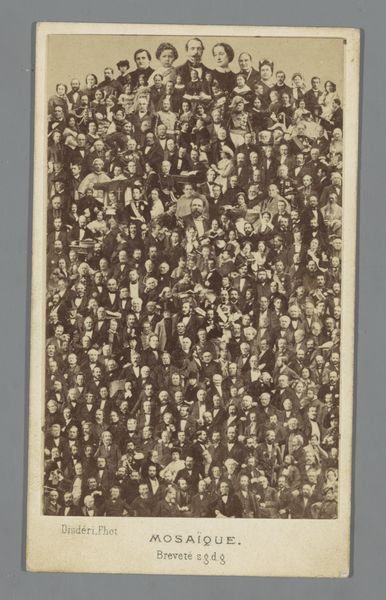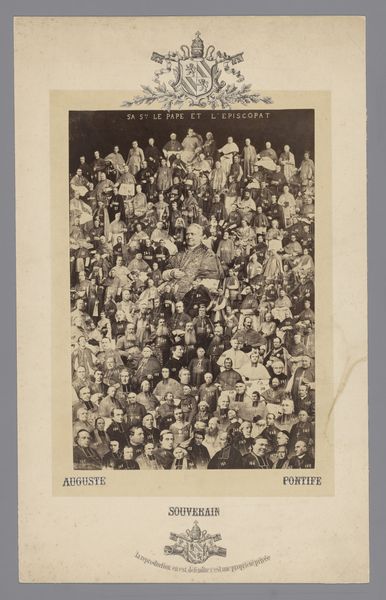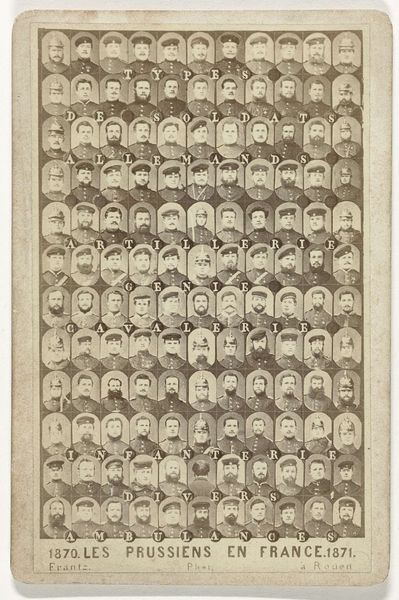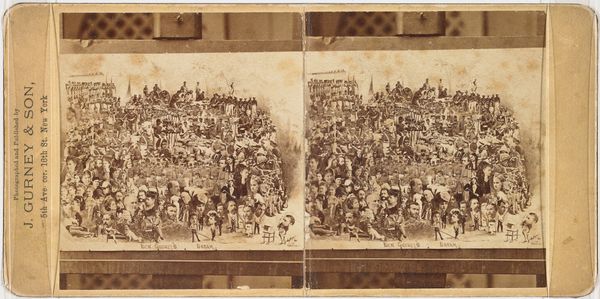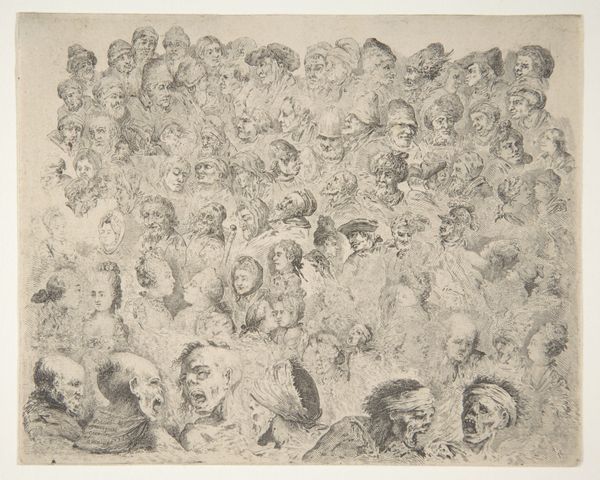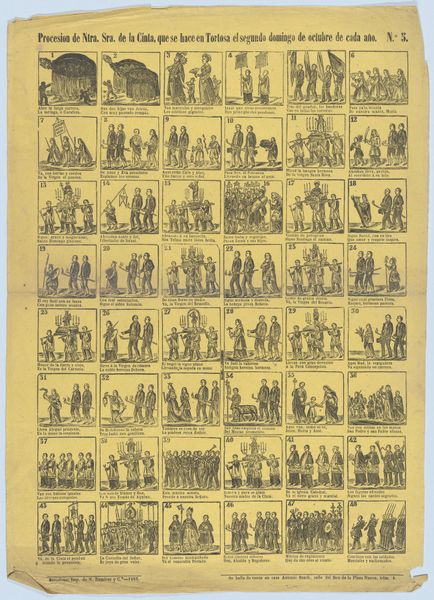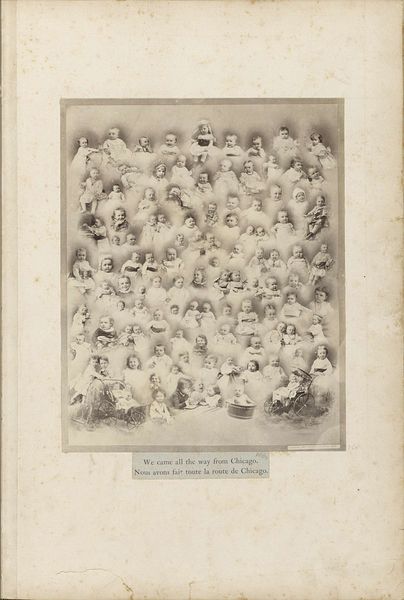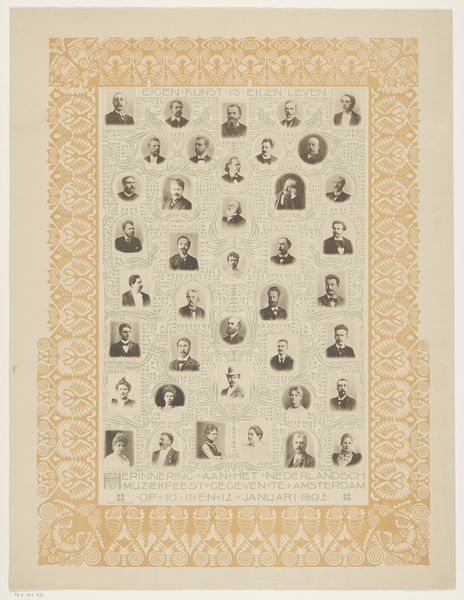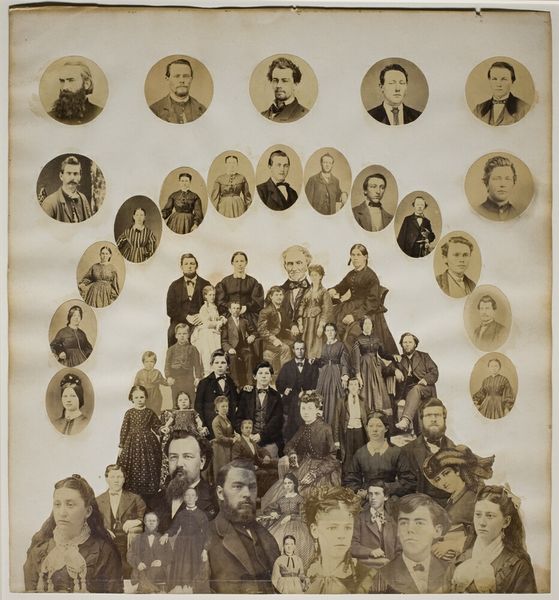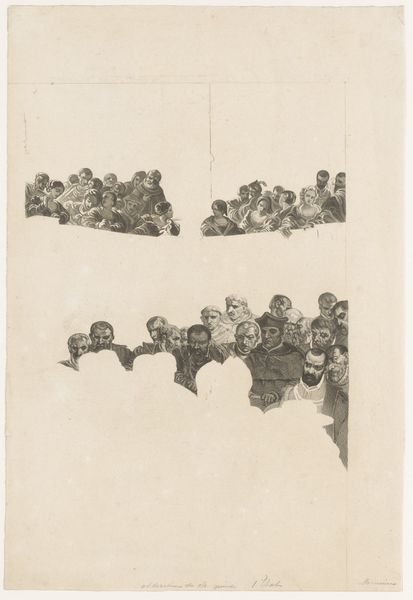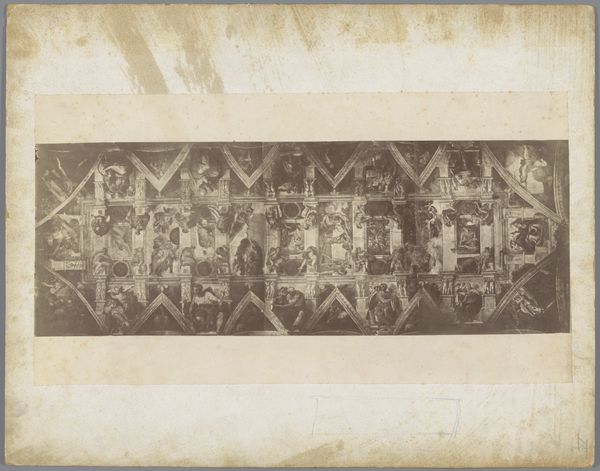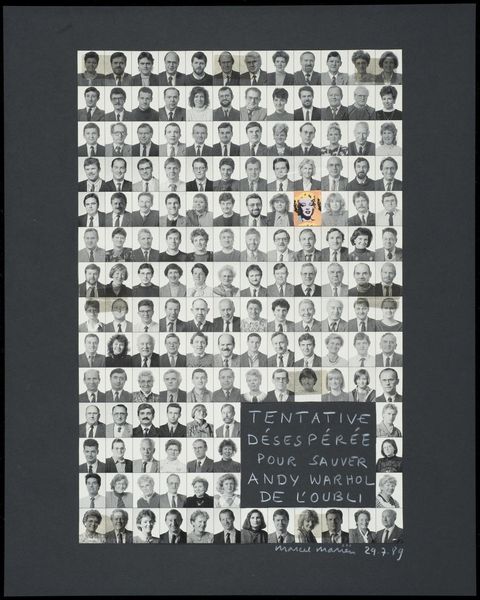
print, photography, multiple, albumen-print
#
portrait
# print
#
photography
#
coloured pencil
#
multiple
#
albumen-print
Dimensions: height 51 mm, width 50 mm
Copyright: Rijks Museum: Open Domain
Curator: Well, this piece certainly makes a statement! It’s a composite albumen print made circa 1862-1863 by Brothers & Co. Ashford titled "Portretten van bekende personen" - or Portraits of Famous People. It’s like a visual census of the Victorian elite. Editor: Oh, my goodness, it's overwhelming! Like being crammed into a tiny, sepia-toned elevator with about five hundred serious faces! A Victorian version of Where’s Waldo, except everyone’s judging you. Curator: Precisely. These albums became popular forms of visual cataloging and were often produced serially for different markets. The albumen process itself – applying egg white to paper – gave it a particular sheen, almost like a simulated luxury. What is being emphasized here is class and fame. Editor: It's fascinating how these photographic “scrapbooks,” almost predating our current influencer culture, were meticulously assembled. I'm sure a lot of power went into choosing who made the cut, metaphorically, of course. What a social barometer! Curator: Indeed. And the idea that a hand-magnifying glass is necessary to appreciate each portrait... it’s almost a commentary on how the proliferation of images, even then, demanded closer inspection to differentiate individuals within the masses. Note that power operated through images, who and how their portraits were used was politically charged. Editor: Right? It’s a little dystopian too, in its way, the promise that every face will be perfect only under magnification… Like, only up close, after intense scrutiny, does the Victorian ideal really hold. It kinda underscores how easily people vanish into history, becoming one huge brown study. Curator: Well, these albums offered a vision of national and transnational belonging but this belonging wasn’t offered equally or readily. Its accessibility also depends on the beholder, as one’s class or political power plays a huge role. These images create a social hierarchy by immortalizing specific identities, genders and race as key. Editor: Thinking about it now, I get this deep urge to flip it over, check who *wasn't* deemed "perfect" enough. Like, let’s see who got left behind! Anyway, my nose is twitching... albumen! Curator: This visual inventory tells us about more than just its subjects, it shows what society then considered worthy, and reminds us of the exclusionary structures, in that time as well as ours. Editor: Makes you wonder, what kind of portraits are we mass-producing now, what judgments they might contain, and who's getting a free ticket to perfect-ville?
Comments
No comments
Be the first to comment and join the conversation on the ultimate creative platform.
